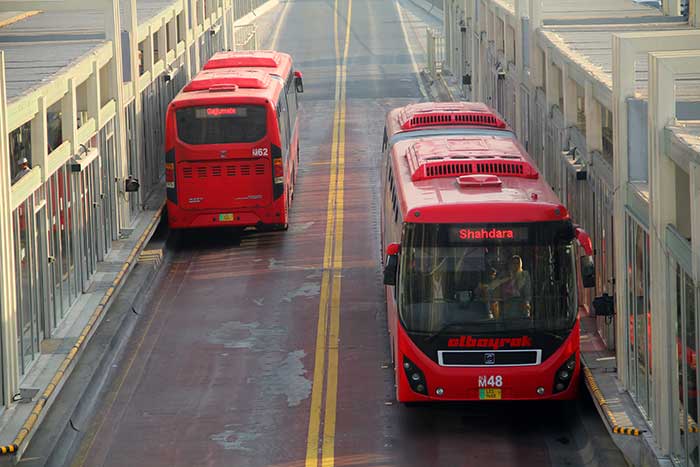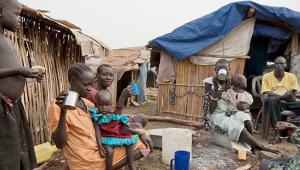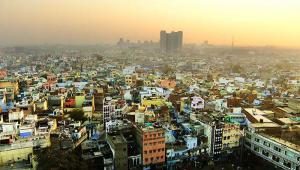web_lahoremetrobus_shutterstock_237716284.jpg

Metro buses in Lahore, Pakistan.
The talk, part of a three-day conference at the IGC called Growth Week, heard from individuals working in transport, land administration, urban development and excise and taxation in major cities in Myanmar, Ghana, Pakistan and India.
Masood-ul-Haq, from Punjab’s Excise and Taxation Department in Pakistan, described the initiatives his department has taken to increase stagnating property tax revenues, which, accounting for 28% of the department's takings, are a crucial source of income for the department.
However, tax-to-GDP ratio is comparatively low in Pakistan, especially for provincial taxes, which have not risen above 0.5% of GDP over the past decade. Masood-ul-Haq said property tax performance was particularly poor, at roughly one fifth of the level collected in comparable countries.
The department had carried out a range of initiatives to increase property tax revenues, including performance-based rewards for staff, linking citizen preferences on what services to prioritise for funding to property tax revenues, digitising data and processes, and encouraging citizen involvement.
Masood-ul-Haq highlighted a monetary incentive scheme for property tax collection staff that was bringing significant gains in revenues. Where staff were taking part in the scheme, the department saw 10-15% more growth in revenue collection in 2012 and 2013 than where staff were not involved.
The need to increase tax receipts in Pakistan was made more salient by Haider Latif, of the government-owned Lahore Transport Company, a regulatory body, who described a massive upgrade of the public transport network in Lahore.
He said this would not have been possible without substantial government support in the form of subsidies to operators.
Rapid population growth in Pakistan, particularly in urban areas like Lahore, led to congested roads that were full of illegal and unsafe vehicles because of a lack of inspection mechanisms. A shortage of public transport vehicles meant travelling by bus was crowded and uncomfortable.
Foreign investment, as well as subsidies provided by the government and a good mechanism to disburse them, enabled Lahore to invest in a fleet of new, environmentally friendly buses from China, a women only bus service, and a host of upgraded roadside infrastructure from signs to bus shelters.
In addition to initiatives including free and discounted travel for seniors and students respectively, a number of major projects have been completed or are in the works in Lahore, including new highways and a metro train.
While an undoubtedly impressive transformation, Latif’s presentation prompted questions of sustainability from the audience.
Latif conceded the cost was very high, but argued that the government “has to chip in” handsomely for such projects, “whether they are affordable or not”, otherwise they are not possible at all.
India’s Kumar Pratap, from the country’s Ministry of Urban Development, also explained a programme under way in India that came with an inevitably high price tag.
By some estimates, the government’s 100 Smart Cities Mission, which aims to upgrade 100 cities in India as the country prepares to deal with a huge increase in its already giant urban population, will cost $1tn between 2012 and 2031.
Pratap said that the government, as it is far from possessing these kinds of funds yet, aims to “start small”. Proposals submitted by 20 cities have been accepted, which will be part funded by the government as well as external sources. Many contain finance leveraged from public private partnerships.
Various models for these PPPs, which span multistorey carparks, solid waste management and water supply – the most difficult area to develop PPPs due to the issue of paying for water being politically thorny – have been developed.
Pratap explained how the government was working to counter such issues. These included a lack of capacity in India’s local government, which he said was being tackled by, for example, standardised model contract documents distributed by central government to make negotiations between the public and private sectors easier.
The event also heard from U Toe Aung of the Yangon City Development Committee in Myanmar, who spoke of the growth challenges Yangon has faced as its economy opened up in the past few years.
Wilfred Anim-Odame, of the Ghana Land Commission, described how his country had implemented an impressive transformation of its land administration systems to cope with the rapid growth of its capital city Accra.
His key message was that synergies between land administration, planning and urban infrastructure development should be exploited, so that the three worked together as a vehicle for economic growth.












